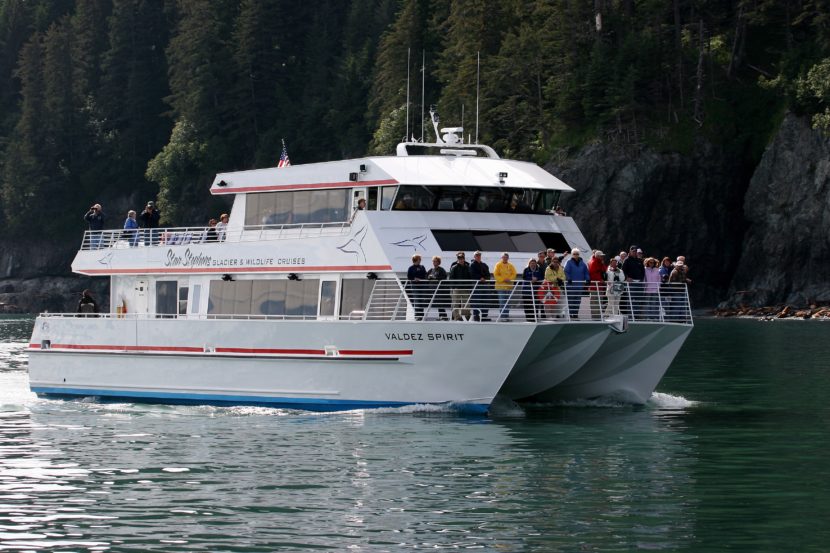
The budget for state-funded tourism marketing has been cut by nearly 80 percent, but Alaska’s tourism industry continues to grow. Visitor counts for 2016 aren’t available yet, but in 2015, the state attracted a record 2 million visitors.
The Alaska Travel Industry Association, or ATIA, is pushing for millions in state funding, as well as something it calls a Tourism Improvement District, or TID.
Industry consultant John Lambeth explained the concept of a TID to the Senate Finance Committee on Jan. 24.
“You have special assessment districts and business improvement districts here in Alaska. It is based on that model,” he said. “It is an industry self-assessment. Industry comes together, sets the rate, decides how this money is gonna be spent, and ensures the efficient, effective spend of these dollars to promote more travel and tourism.”
Prior to the release of the governor’s budget, ATIA requested that the $9.7 million collected from the state’s car rental tax in 2015 be redirected to tourism promotion. They repeated their request during the hearing, calling their plan for funding tourism promotion a “partnership with the state.”
One casualty of the budget cuts was a Alaska’s Official State Vacation Planner. a 51-page, full-color magazine that goes out to about 470,000 people each year, according to the Department of Commerce. The association says it costs about $3 million to create, produce and distribute. The magazine is still available online.
Sen. Anna MacKinnon, co-chair of the Senate Finance Committee, expressed interest in the idea of a Tourism Improvement District, but was not optimistic about additional funding given the state’s budget crisis.
“My comment to you is that expecting $9.5 million out of the general fund is probably unrealistic,” she said.
The TID and direct state funding are separate policy calls, but MacKinnon was able to read between the lines of what the industry was asking for.
“To just put it very bluntly, you believe you have a higher likelihood of Alaska businesses moving forward and taxing themselves to create a destination marketing plan, if the state had some sort of contribution into that,” she said.
Industry leaders like Lambeth say that Alaska’s economic situation is precisely why lawmakers should consider reinvesting in tourism.
“If you invest in travel promotion marketing, that creates additional demand, that demand creates visitor spending, and that in turn creates tax revenues and jobs,” he said.
Sen. Peter Micciche said that the low energy prices that have otherwise devastated Alaska’s economy are one of the driving forces behind the high visitor numbers in Alaska.
“We’re suffering from low fuel prices; we’re enjoying a higher visitor rate. So there is a benefit there directly. I don’t think you’re going to see a reduction,” Micciche said. “I think you’re going to continue to see an increase in visitors in the tourist industry. What’s difficult to quantify is how much higher the growth would have been with higher funding.”
While it’s true that Alaska hasn’t seen a decline in visitor numbers, some argue that state dollars are necessary for local communities to benefit from tourism.
Colleen Stephens, who owns a wildlife cruise company in Valdez, says that state dollars are vital for small businesses like hers.
“You will see large ships, large cruise ship companies or large corporations. … They have the financial backing to fill their assets,” she said. “They do get support from the state program, but it is your Alaskan-owned businesses that are going to feel the larger impact from diminished marketing dollars to drive traffic to the state.”
The industry hasn’t come forward with a TID bill, but says that it could quickly draft legislation.
